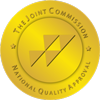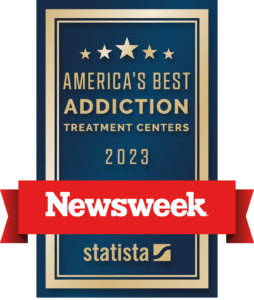Avoidant Personality Disorder and Substance Use Disorder
Avoidant personality disorder (AVPD) and substance use disorder (SUD) share many of the same qualities. Both diseases involve feelings of shame, inadequacy, loneliness, and fears of rejection. People with AVDP are likely to engage in the use of harmful substances.
In contrast, those with a substance use disorder typically display avoidant behaviors. Avoidant personality disorder treatment and substance use disorder treatment includes cognitive-behavioral therapy and group therapy. Therapy builds pride, creates positive thinking, and eliminates substance use.
What is Avoidant Personality Disorder?
Avoidant Personality Disorder is defined as long-term behaviors of severe social anxiety, an intense fear of rejection, feelings of inadequacy, and isolation. Even with all the fears, those with AVPD still desire relationships and intimacy. With a guarantee that there will be no rejection, people with an avoidant personality disorder will feel comfortable and be themselves.
About 2.5 million Americans have an avoidant personality disorder. It is believed that early childhood experiences increase the risk of this disorder. Children whose parents lack affection and encouragement can suffer neglect. Children may also develop avoidance behaviors as a way to cope.
Avoidant Personality Disorder affects men and women equally. Most diagnoses are made in adulthood but can be diagnosed in children as young as 2. To receive a diagnosis, a person must experience the three characteristics. They must also experience a minimum of four of the following symptoms.
Symptoms and Characteristics of Avoidant Personality Disorder
Three characteristics of AVDP are:
- Social inhibition
- Feelings of inadequacy
- Sensitivity to rejection
Symptoms of AVDP include:
- Avoiding activities that involve other people for fear of rejection
- Refusal to interact with others without a guarantee of positive responses
- Hesitant to build intimate relationships due to shame
- Hyperfocused on the negative in social situations
- Feelings of inadequacy
- Issues with self-worth
- Avoid activities that can cause shame
An evaluation by a mental health professional is required to determine the presence of other disorders.
Is Avoidant Personality Disorder Just Social Anxiety?
There are common features in AVPD and social anxiety. But, they are different mental health conditions. Because of the similarities, people often mistake the two.
Some individuals may not know which disorder they have until they seek treatment. A psychological exam can help get a diagnosis. Without a correct diagnosis, a successful treatment plan can not be developed.
Social anxiety is a specific fear of social situations. People who suffer from social anxiety worry they may embarrass themself in public. The fear of embarrassment is common for everyone. But, those with social anxiety can experience issues with work, school, and daily life. Most individuals with social anxiety are diagnosed between the ages of 8 and 15.
Levana Slabodnick, LISW-S, a therapist in Columbus, Ohio, notices the difference may lie in how a person views their own experience. “A fundamental difference between social anxiety disorder and avoidant personality disorder relates to how the sufferer perceives their own pain. Those with anxiety understand that their anxiety is irrational. They realize that the world doesn’t judge them as harshly as they judge themselves.
Those with AVPD, on the other hand, lack this insight. They hold deep-rooted feelings of insecurity and worthlessness that they believe to be factual.”
Substance Use Disorder: Symptoms and Diagnosis
Substance use disorder or addiction is a disease that affects a person’s brain and behavior. SUD is an inability to stop using drugs or alcohol, even with negative consequences. For a person to be diagnosed with SUD, they must meet 2 of the 11 criteria.
For severe substance use disorder, a person must meet 6 of the 11 following criteria.
- The use of substances has been more extended and in more significant amounts than intended.
- Unsuccessful at stopping the use of substances.
- A person’s schedule revolves around drugs or alcohol.
- Cravings for drugs or alcohol.
- Continued use despite the negative outcomes
- Putting oneself in risky and dangerous situations to achieve the substance.
- Continued use of substances despite effects on work, school, and home life.
- Letting substance use interfere with activities.
- Having to use more of a substance to achieve the same impact.
- Experiencing symptoms of withdrawal without drugs or alcohol.
Co-Occurrence of Avoidant Personality Disorder and Substance Use Disorder
The co-occurrence of AVPD and SUD is common. The feelings of loneliness and shame may lead individuals to use drugs or alcohol. Psychology Research and Behavior Management note that depression and substance abuse are common in AVPD. The risk of suicide and suicidal ideations are increased with this dual diagnosis.
Individuals with AVPD may use substances alone to cope with loneliness. At the same time, others may use substances in social situations to lessen their fears. Alcohol is a commonly used substance. It temporarily relieves the symptoms of AVPD.
The use of drugs and alcohol can make the symptoms of AVPD worse. The feelings of shame and guilt from using substances increases the fear of being judged. The use of substances to cope with AVPD can lead to dependency and substance use disorder.
According to The American Psychiatric Association, 2.5 percent of Americans have a diagnosis of Avoidant Personality Disorder. And the National Survey on Drug Use and Health (NSDUH), stated almost 10 percent of Americans struggle with Substance Use Disorder. Thirty-eight percent of Americans who suffer from SUD also experience a mental disorder. At the same time, 18 percent of those with a mental disorder suffer from SUD.
To effectively treat avoidant personality disorder and substance use disorder, it is essential to know how the two interact. Depending on which came first, AVPD or SUD will determine the treatment approach. But, either way, both disorders must be treated to increase recovery chances.
What Does Avoidant Personality Disorder Treatment Involve?
Avoidant Personality Disorder treatment can be difficult. Some people even believe that it is untreatable. The desire for close relationships and intimacy increases the chances of following a treatment plan.
Psychotherapy is the most common avoidant personality disorder treatment. Cognitive-behavioral therapy (CBT) and psychodynamic therapy are two types of therapy used to treat AVPD. CBT helps people identify and change harmful beliefs and behaviors. Psychodynamic therapy focuses on the feelings of incompetence while repairing past traumas.
Adding social skills training to avoidant personality disorder treatment reduces the effects of AVPD on a person’s social life. The American Psychological Association tested the effects of social skills training on AVPD. Twenty-eight adults attended eight sessions of training. Results show individuals had significant improvements. They showed reduced social anxiety, avoidance tendencies, and discomfort in social settings.
Co-Occurring Avoidant Personality Disorder and Substance Use Disorder Treatment
Depending on the level of dependency and the substances used, a detox program may include medication. Medications are used to manage withdrawal symptoms and make the process more comfortable. Other therapy programs used in the treatment of avoidant personality disorder and SUD include the following.
- Exposure therapy
- Cognitive-behavioral therapy
- Psychodynamic therapy
- Social skills training
- Schema therapy
- Supportive-expressive therapy
Many individuals seek treatment to build confidence and have healthy intimate relationships. They may want to know how substance use affects their ability to connect with others. Treatment for avoidant personality disorder and substance sed disorder builds self-esteem, communication skills, and the ability to interact with other people successfully.
12-step programs can be beneficial for those with SUD as well as an avoidant personality disorder. Step 4, for instance, includes avoidance and fear. The goal of 12-step programs is for people to take a balanced approach to self-confidence. Instead of focusing only on avoidance and fear, people should also focus on the moments they faced their fears with positive results.
Treatment for avoidant personality disorder and SUD can include a variety of therapies. Residential treatment for co-occurring disorders can consist of individual, group, and self-help therapies. Like all chronic diseases, AVPD and SUD can not be cured. Still, they can be successfully managed, and individuals can leave healthy, productive lives.
Avoidant Personality Disorder Treatment and Self Care
While in avoidant personality disorder treatment, individuals may find relief with a self-care routine. Self-care routines are beneficial. They can relieve symptoms and the emotional distress of AVPD. It is common to turn to harmful substances to cope, but drugs and alcohol only make AVPD worse.
Using drugs and alcohol to cope with the symptoms of AVPD can lead to reckless behaviors and even self-harm. But choosing positive coping skills can do more than relieve the current pain.
Positive coping methods that can lead to long-term growth include.
- Live healthily – Eating healthy, nutritious meals, physical activity, and a good night’s sleep helps improve mental health. Spending time outside in the warm sun and fresh air can do wonders for a person’s mental health.
- Don’t force it – When a person has an avoidant personality disorder, it is important to process feelings and confront challenges. Those with AVPD might spend time around other people to realize it won’t always end in rejection. But, do not force interactions. Working with a therapist can help individuals develop a plan of action and goals to improve the symptoms of AVPD.
- Build social skills – Building social skills is important for those with AVPD. Classes and groups are available to help build these skills. Therapists and treatment centers can provide more information on these classes.
- Do fun things – Doing things that a person enjoys makes social interactions more natural. Focusing on the activity at hand leads to natural social interactions and making new friends easier. When a person with AVPD interacts with like-minded people, it is less challenging. It typically ends with positive results.
- You matter – The most important thing to continually tell yourself is, YOU MATTER. Take time to make yourself a priority. Get a massage, color your hair, or get that tattoo you have been wanting.
Avoidant Personality Disorder Treatment at Sana Lake Recovery Center
If avoidant personality disorder treatment is not received, it can affect a person’s whole life. They may end up alone, isolated, and lonely. If you or someone you love is experiencing symptoms of AVPD and do not have a formal diagnosis, we can help. Our licensed therapists are there to help from the first day to the last.
Call us now and get started on your path to a better life.



